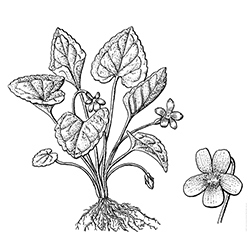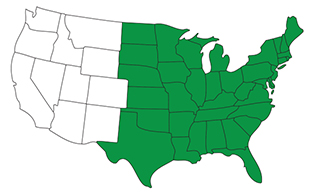

Wild Violet
Viola papilionacea
Wild Violet is a perennial broadleaf weed that is also known as Common Blue Violet, Meadow Violet, Hooded Blue Violet and Field Violet. Its scientific name is Viola papilionacea.
Identify

Creeping

Crenate

Cordate
Wild Violet is a low-growing, colony-forming broadleaf weed. It can be identified by its smooth, green, heart-shaped leaves and violet-like flowers. The stems and leaves are completely hairless, and the leaves arise from a basal crown. Blooming from March through June (and sometimes a second time in October through November), Wild Violet produces flowers with five petals that can be anywhere from white to deep purple in color. It is spread by short, stout branching rhizomes.
Life Cycle
This broadleaf weed often grows in fields, meadows, low woods, shaded areas of lawns, ditches, waste areas, roadsides and railroads. East of the Rocky Mountains, Wild Violet thrives throughout North America.

Control
Viola papilionacea can be a difficult weed to remove from a lawn or garden. The plant is often sold as groundcover for a garden or nursery but quickly spreads to lawns and landscaping. Physical removal is ineffective for control as even a few remaining roots can lead to reestablishment. Professionally selected and applied broadleaf weed killers—based on your specific climate and geography—are the most effective method for control.







